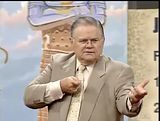|
The Politics of Schism in the Catholic Church
Schism is quickly becoming a weapon of choice for the Religious Right. Used so effectively against mainstream Protestant denominations, it applied to "Mother Church" for the very same purpose: reducing our capacity to advocate for social and economic justice Using the age-old tactic of divide and conquer, I noted here at Talk to Action:
Schism is very much a top-down phenomenon. Influential bishops and priests backed by the Pope and right-wing lay intellectuals are aggressively pushing the Church rightward. Unlike the Protestant Reformation, when the reformers left to establish their own denomination, today we are seeing more of a "reverse schism," one in which those who actually oppose reform and transparency create an atmosphere so hostile and so constricting that those actually desiring transparency and reform are forced out. They have little support at the base of the U.S. church. Even today, only somewhere between 50,000 to 100,000 out of 60 million American Catholics describe themselves as "traditionalist." And a more traditionalist Church has other benefits for the Catholic Right:
Church traditionalists' goal is simple: a return to a pre-Vatican II Catholic Church, one where a Catholic toes the line, remains mum, or gets out. They object, among other things, to replacing the language of Mass from Latin to the local language; the elevation of conscience in relationship with Magisterium (the "teaching authority of the Roman Catholic Church"). Perhaps more importantly the respectful view of other faiths enunciated by Vatican II and the ecumenical dialog that followed was anathema to those who viewed the one true church as the only path to eternal salvation. My Public Eye piece explores the historical events that brought us to the current state of affairs. Prominent is the role that Vatican II played; first bringing hope for Catholic moderates and liberals from the heady days of Pope John XXIII to their disappointment of Pope Paul VI's 1968 affirmation of the Church's opposition to artificial birth control in the encyclical, Humanae Vitae. And as I explain therein, Humanae Vitae was the point where the traditionalists regained their momentum, slowly rolling back positive changes ever since. But what separates schism-as-a-means-to-control in Catholicism from mainline Protestantism is the nature of the prize. If the Catholic Right -- and by obvious extension, the Religious Right -- gain control of Catholicism, they will effectively control an institution with world-wide reach, a centralized, top-down chain of authority (with a built-in bureaucracy) -- and the nation-state status of the Vatican to boot.
The Politics of Schism in the Catholic Church | 3 comments (3 topical, 0 hidden)
The Politics of Schism in the Catholic Church | 3 comments (3 topical, 0 hidden)
|
||||||||||||
| ||||||||||||




 print page
print page